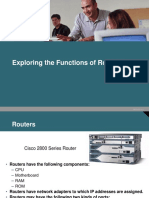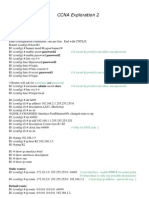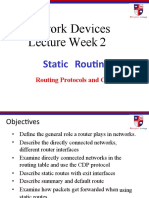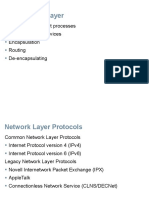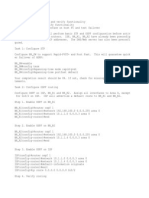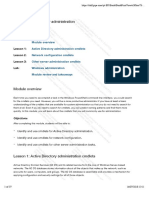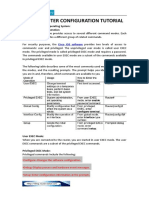0% found this document useful (0 votes)
276 views46 pagesRouter and Routing Basics
The document discusses routers and routing basics. It defines routers as devices that interconnect networks and must have multiple network interfaces and implement network layer protocols. It describes the core functions of routers as interconnecting networks, routing to build route tables, switching to forward packets, and connecting different network types. It then covers topics such as route tables, how routes are established and maintained, different types of routes including static, dynamic, default and float static routes, and the working principles of routing and forwarding functions in routers.
Uploaded by
Đạt NguyễnCopyright
© © All Rights Reserved
We take content rights seriously. If you suspect this is your content, claim it here.
Available Formats
Download as PPT, PDF, TXT or read online on Scribd
0% found this document useful (0 votes)
276 views46 pagesRouter and Routing Basics
The document discusses routers and routing basics. It defines routers as devices that interconnect networks and must have multiple network interfaces and implement network layer protocols. It describes the core functions of routers as interconnecting networks, routing to build route tables, switching to forward packets, and connecting different network types. It then covers topics such as route tables, how routes are established and maintained, different types of routes including static, dynamic, default and float static routes, and the working principles of routing and forwarding functions in routers.
Uploaded by
Đạt NguyễnCopyright
© © All Rights Reserved
We take content rights seriously. If you suspect this is your content, claim it here.
Available Formats
Download as PPT, PDF, TXT or read online on Scribd
/ 46




